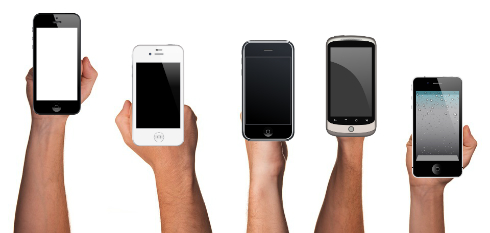
Here we are at the beginning of another new year and already we are hearing rumblings that the smartphones we have are about to become obsolete. Given this happens every year, we are likely taking this in stride. We really shouldn’t, though, because this year phones are likely to make huge moves due to the massive amount of change in cellular technology.
At the heart of this change is the new Snapdragon chipset from Qualcomm, the 820, that promises to pretty much make the phone you have, regardless of who made it or what’s inside, look ancient by comparison. We call this kind of change a revolution because it is so massive. Let’s go through some of the coming improvements.
(Related: Nokia opts out of smartphones for the forseeable future)
Performance: Typically we are lucky to see a 5% performance increase year over year, and the minimum performance improvement people notice is 10%, so when you get a new phone every other year, it seems a tad snappier. With this processor, the hype promises a better than 30% jump in processing performance. After this jump we’ll go back to 5% per year.
But the even bigger jump is on network performance, which could be more than 200% in some areas, or in places where MU-MIMO routers are installed. Yes, not only is your smartphone going to be obsolete, but unless you have one of the few MU-MIMO routers, you’ll have to replace it as well to get access to this performance. That is a massive bump for things like streaming movies, games, or even your desktop, but just realize both ends have to be updated to see the performance increase. Thus, the 30% is a given; the 200% will depend on where you live and what is installed at work and in your home.
Sound: I don’t care if we are talking smartphones or tablets, chances are your speakers suck. Even the best, which have two front-facing speakers, tend to have anemic sound because the speaker size just can’t handle both high volume and high range. Also, the speakers are so close together that we also get crappy separation.
Well, that changes in 2016 too. With an option to compress the dynamic range, these new phones can pound out the volume and come close to the performance of a desktop speaker able to fill a room (granted, a small room) with music. And using technology similar to what is used to create surround sound, your ears will be fooled into thinking the speakers are much farther apart.
Visual media: I don’t see much point in carrying a camera unless you really need the flexibility of a DSLR. Whether you take still pictures or videos, that camera you’ve had to carry is about to have even less reason to be taken off the shelf. Using the extra power noted above, both movies and still shots will come out better due to corrective post-processing in the camera. Ghosting, color accuracy and picture clarity, light correction, and picture resolution should improve to where most of us won’t be able to tell if the picture was taken by a real camera or a smartphone. The smartphone will also do things that the camera can’t, like auto-index the pictures before shipping them to the cloud for safekeeping.
Security: Qualcomm is bringing out an advanced fingerprint sensor that can be put under glass or metal, and because it uses a sonar-like technology, it can see through dirt and still be accurate and reliable. Qualcomm isn’t alone, though, as Microsoft is rolling out its Windows Hello feature that scans your eyeball instead of your finger for their phones.
On the new Snapdragon 820-based phone is a hardware-based behavioral antivirus tool that, because it is hardware-based, should be difficult to overcome and will look for bad behavior. You’re still going to need to be careful and avoid side-loading apps, but if something gets through one of the app stores, there is a good chance it’ll get caught by this technology.
No more cords: I’m talking wireless everything from power to connecting with your TV or monitor. Granted, initially both will require accessories you don’t have now, such as annoying inductive chargers where you have to place the tablet or phone in just the right place. The new technology is called resonance charging, and it can work within inches and be placed underneath desks and tables, so you can just put your devices on the table and have them charge.
Imagine your phone charging once it is in the car, or your laptop while it is sitting on the conference table or desk. Hotels can build it in to nightstands and desks, and airlines and car-makers into the seats, and suddenly who cares about battery life? There is a company called Si-Ware planning to release this year a technology that can broadcast power to your smartphone or tablet up to 30 feet.
Qualcomm is also promising fast charging that will take your battery to 80% in less than 30 minutes. On top of this, Huawei announced that it had a new battery that could get to 80% in five minutes. That one feature could make their phones really stand out this year.
So blazing-fast phones that are more secure, don’t need power bricks or chords of any kind, take far better pictures and videos, and have batteries that can fully charge in minutes. As I look at my own top-of-the-line phone that is only a few days old and soon to be massively obsolete, I’m actually glad this kind of change only happens once in a decade—otherwise my wallet would never survive.






